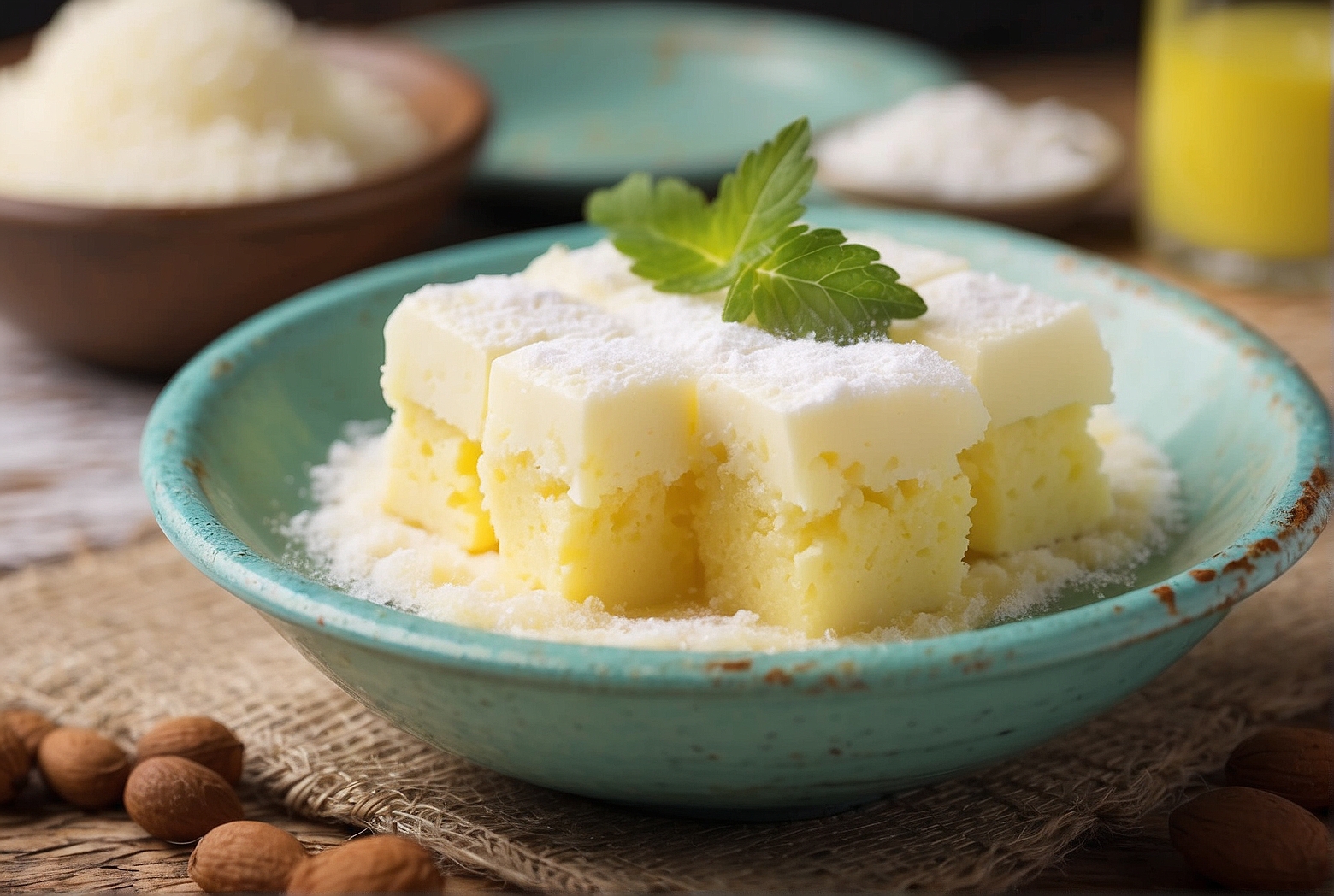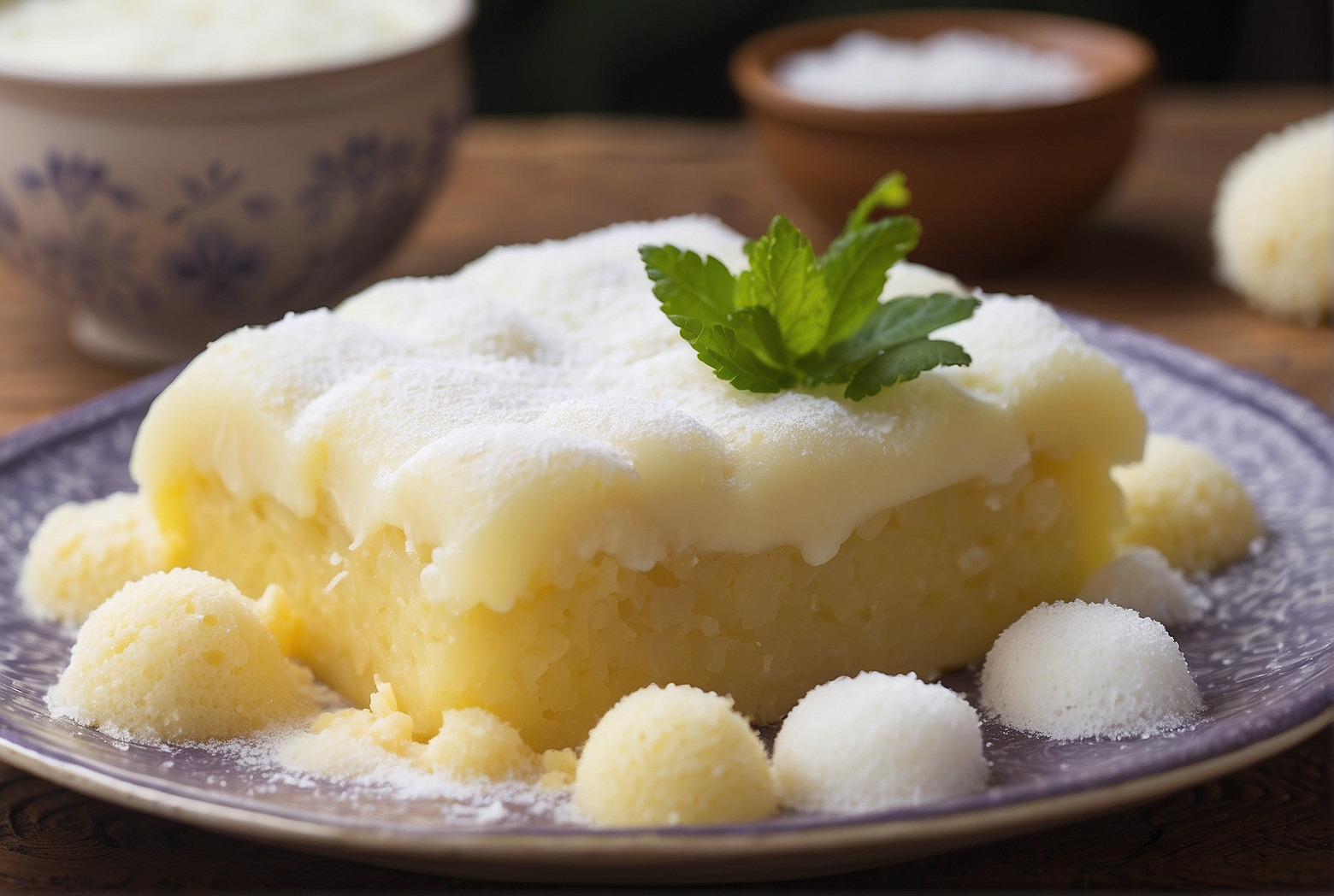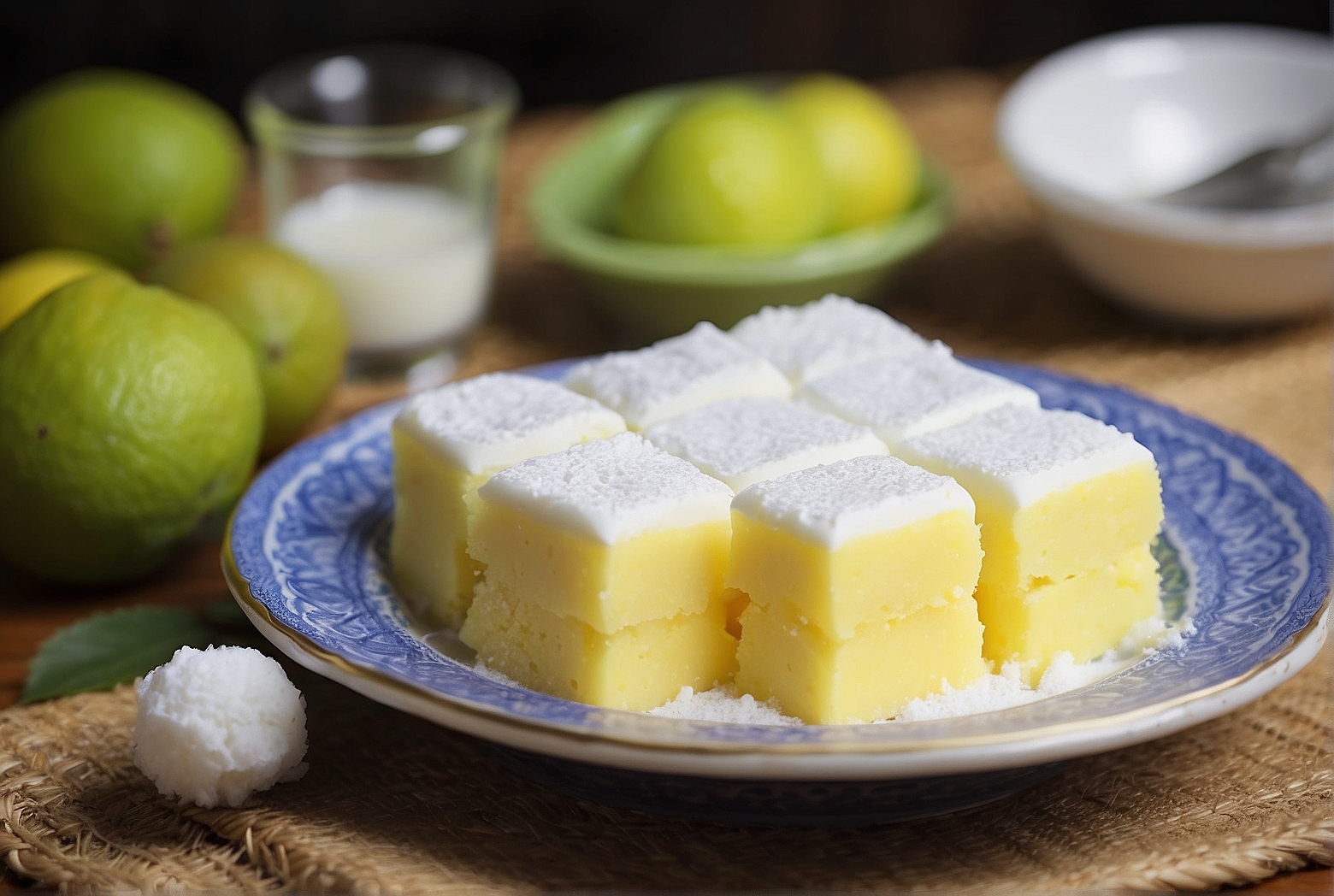Today, we are going to explore the delightful world of Brazilian cuisine and learn how to make one of its most beloved desserts: Canjica. This traditional dish, often enjoyed during festivities and special occasions, is a creamy and comforting treat that will transport your taste buds to the streets of Brazil. With its simple yet flavorful ingredients, making Canjica at home is easier than you might think. So grab your apron and get ready to discover the step-by-step process of creating this mouthwatering Brazilian delicacy.
Introduction to Canjica
Canjica is a traditional Brazilian dessert that is beloved for its creamy texture and sweet flavors. This delightful dish is made from dried corn kernels and various condiments and seasonings, resulting in a warm and comforting treat. In this article, we will explore the origins of canjica, the ingredients used to make it, the process of preparing and cooking the dish, as well as how to sweeten it and add flavor and texture. We will also discuss the traditional way to serve and garnish canjica, as well as the proper techniques for storing and reheating it.
What is Canjica?
Canjica is a dessert that originated in Brazil. It is made from dried corn kernels, which are cooked until soft and creamy. The dish is traditionally sweetened with condensed milk, sugar, and sometimes coconut milk. It is often flavored with spices such as cinnamon and vanilla, and can be garnished with toppings like grated coconut or cinnamon powder. Canjica is typically eaten during festivals and celebrations, especially during the month of June when Brazilian festivities known as Festa Junina take place.
Traditional Origins
Canjica has deep roots in Brazilian culinary traditions and is often associated with Festa Junina, a festive celebration that marks the beginning of winter. Festa Junina is a time when families and friends gather to enjoy traditional foods and dance around bonfires. Canjica is an essential part of these celebrations, and its warm and comforting qualities make it perfect for this time of year. The dish has also become popular outside of Brazil, showcasing the country’s rich culinary heritage.
Ingredients Used
To make a delicious batch of canjica, you will need a few key ingredients. The main ingredient is dried corn kernels, preferably the white variety. Other essential ingredients include water, whole milk, condensed milk, sugar, and salt. Optional ingredients for flavoring canjica include spices like cinnamon and vanilla, as well as grated coconut. Coconut milk can be used instead of or in addition to whole milk for a creamier texture and a hint of tropical flavor. These ingredients come together harmoniously to create the delectable taste of canjica.
Variations of Canjica
While the traditional canjica recipe is beloved by many, there are also variations that allow for personalization and experimentation. One popular variation is canjica branca, which is made with white corn kernels instead of yellow. This version has a lighter color and a slightly milder taste. Canjica nordestina is another variation that adds ingredients such as cloves and coconut flakes to enhance the flavors. Some people even add toppings like caramel or chocolate sauce to their canjica for an extra indulgence. The possibilities for variation are endless, so feel free to get creative and make canjica your own!

Preparing the Ingredients
Before you can start cooking your canjica, you need to take some steps to prepare the ingredients properly. This includes gathering all the necessary items, cleaning and soaking the dried corn kernels, and prepping the other ingredients.
Gathering the Necessary Ingredients
First, make sure you have all the required ingredients on hand. This includes dried corn kernels, water, whole milk, condensed milk, sugar, salt, and any optional flavorings or toppings you wish to use. Having everything ready before you start cooking will make the process smoother and more enjoyable.
Cleaning and Soaking the Dried Corn Kernels
To prepare the dried corn kernels, you will need to clean and soak them. Start by rinsing the kernels under cold water to remove any debris or dirt. Then, place them in a large bowl or pot and cover with water. Allow the corn kernels to soak overnight or for at least 4-6 hours. This soaking process will soften the corn kernels and make them easier to cook.
Prepping the Other Ingredients
While the corn kernels are soaking, you can take the time to prep the other ingredients. Measure out the desired amounts of whole milk, condensed milk, sugar, salt, and any optional flavorings or toppings. Having everything pre-measured and ready to go will save you time and stress during the cooking process.
Cooking the Canjica
Once your ingredients are prepared, it’s time to start cooking the canjica. This involves boiling the soaked corn kernels, adding the condiments and seasonings, and then simmering the mixture until it reaches the desired consistency and flavor.
Boiling the Soaked Corn Kernels
First, drain the soaked corn kernels and transfer them to a large pot. Cover the corn kernels with fresh water, ensuring there is enough water to fully submerge them. Bring the pot to a boil over medium heat, then reduce the heat to low and let the corn kernels simmer.

Adding the Condiments and Seasonings
While the corn kernels are simmering, it’s time to add the condiments and seasonings that will infuse the canjica with flavor. Begin by adding the whole milk, condensed milk, sugar, and a pinch of salt to the pot. Stir well to combine all the ingredients and bring the mixture back to a simmer.
Simmering the Mixture
Allow the canjica mixture to simmer uncovered for about 30-40 minutes, stirring occasionally to prevent sticking or burning. The corn kernels should become soft and creamy, and the mixture will thicken as it cooks. Keep a close eye on the heat and adjust as needed to maintain a gentle simmer.
Creating a Creamy Texture
To achieve the desired creamy texture in your canjica, there is an additional step you can take. By blending a portion of the canjica and then returning it to the main pot, you can create a smooth and velvety consistency.
Blending a Portion of the Canjica
Using a ladle or a measuring cup, scoop out about one-third of the cooked corn kernels from the pot. Transfer them to a blender or food processor.
Returning the Blend to the Main Pot
Blend the corn kernels until smooth, adding a small amount of water or milk if necessary to help with blending. Once smooth, carefully pour the blended mixture back into the main pot containing the remaining canjica. Stir well to incorporate the blended portion into the rest of the canjica, creating a creamy and luscious texture throughout.
Sweetening the Canjica
Canjica is known for its sweet flavor, and there are several options when it comes to sweetening this delightful dessert. Let’s explore the different sweeteners you can use, how to add them to taste, and how to stir and adjust the flavor as needed.
Choosing the Sweeteners
The traditional sweeteners for canjica are condensed milk and sugar. The condensed milk adds richness and creaminess, while the sugar enhances the sweetness. However, you can also experiment with other sweeteners such as honey or maple syrup to add unique flavors to your canjica. Consider your personal preferences and taste buds when selecting the sweeteners you want to use.
Adding the Sweeteners to Taste
Start by adding a small amount of condensed milk and sugar to the simmering canjica mixture. Stir well and taste the mixture to see if it reaches your desired level of sweetness. If you prefer it sweeter, gradually add more sweeteners, stirring and tasting until you’re satisfied with the flavor. Remember that you can always add more sweeteners, but it’s difficult to remove them once they’ve been added, so take it slow and adjust as needed.
Stirring and Adjusting the Flavor
As you add the sweeteners, make sure to stir the canjica well to distribute the flavors evenly. This will help incorporate the sweetness throughout the dish. If you find that the flavors aren’t balanced or the canjica is too sweet, you can adjust the flavor by adding a pinch of salt or a squeeze of lemon juice. These complementary flavors can help to enhance and balance the sweetness, providing a more harmonious taste.
Adding Flavor and Texture
While canjica is delicious on its own, you can take it to another level by adding various flavors and textures. Let’s explore some options for incorporating additional ingredients into your canjica to create a more complex and enticing taste experience.
Incorporating Milk or Coconut Milk
To enhance the creaminess and add a hint of tropical flavor, you can substitute some or all of the whole milk with coconut milk. The rich and velvety texture of coconut milk pairs beautifully with the soft corn kernels. Alternatively, you can use a combination of both milk and coconut milk to strike a balance between the two flavors. Experiment with different ratios to find your preferred level of coconut influence in your canjica.
Enhancing with Spices and Aromatics
Spices and aromatics can elevate the flavor profile of your canjica. One popular choice is cinnamon, which adds warmth and depth to the dish. Simply sprinkle some ground cinnamon into the simmering mixture or use a cinnamon stick for a more subtle infusion. Additionally, vanilla extract can provide a sweet and floral note to the canjica. Consider adding a splash of vanilla extract or scrape the seeds from a vanilla bean and simmer it with the corn kernels for an exquisite taste.
Selecting Additions like Cinnamon or Vanilla
To add texture and visual appeal, you can choose from a range of additions. Grated coconut is a classic option, offering a slight chewiness and a burst of tropical flavor. You can sprinkle the grated coconut on top of the individual servings or mix it into the canjica before serving. Another common addition is ground peanuts, which provide a delightful crunch and a nutty undertone. Other possibilities include raisins, chopped nuts, or even chocolate shavings. Let your creativity guide you in selecting the perfect additions for your canjica.
Serving and Garnishing
Once your canjica is cooked and flavored to perfection, it’s time to think about presentation. Serving and garnishing the dish properly adds to the overall experience and makes it even more enticing.
Pouring the Canjica into Bowls
Using a ladle or a large spoon, carefully transfer the cooked canjica into individual serving bowls or dessert cups. Make sure to distribute the creamy mixture evenly among the bowls for everyone to enjoy.
Allowing it to Cool
After pouring the canjica into the bowls, let it cool for a few minutes before serving. This will prevent any accidental burns and allow the flavors to meld together even further. Canjica can be enjoyed warm or chilled, so it’s up to you whether you prefer to serve it immediately or refrigerate it for a while.
Decorating with Traditional Toppings
To add visual appeal and a touch of tradition, you can garnish your canjica with traditional toppings. Grated coconut, cinnamon powder, or a combination of both are popular choices. You can sprinkle a generous amount of grated coconut on top of the canjica and then lightly dust it with cinnamon powder. This will create a beautiful contrast of colors and textures, making your canjica even more inviting. Feel free to get creative with the toppings and add your personal flair to the presentation.
Storing and Reheating
In the unlikely event that you have any leftover canjica, it’s important to know how to store and reheat it properly to maintain its delicious flavors and textures.
Proper Storage Techniques
Transfer any leftover canjica to an airtight container and refrigerate it. When stored properly, canjica can last for up to three to four days in the refrigerator. Make sure to cover the canjica tightly to prevent it from absorbing any other odors or flavors from the fridge.
Reheating the Canjica
To reheat the refrigerated canjica, you can either heat it slowly on the stovetop over low heat or in the microwave using short bursts to avoid overcooking. Stir the canjica occasionally as it reheats to ensure it warms up evenly. If the mixture appears too thick after refrigeration, you can add a little milk or water to loosen it up.
Enjoying Canjica
Now that your canjica is ready, it’s time to enjoy the fruits of your labor. Below are some traditional serving suggestions and tips on how to savor the flavors and textures of this delectable Brazilian dessert.
Traditional Serving Suggestions
Canjica is often enjoyed as a dessert after a hearty meal, particularly during Festa Junina celebrations. It can be served on its own or alongside other Brazilian treats such as pamonha, a corn husk-wrapped sweet dessert, or paçoca, a peanut-based candy. Canjica can also be served as a cold treat during hot summer days.
Savoring the Flavors and Textures
When you take your first spoonful of canjica, savor the creamy texture and sweet flavors. Close your eyes and appreciate the combination of smoothly cooked corn kernels with the richness of milk and condensed milk. Pay attention to the subtle hints of spices and aromatics that add depth to the dish. Enjoy the contrasting textures of the toppings as they mingle with the creamy canjica. Take your time to fully immerse yourself in the flavors and textures, and allow each spoonful to transport you to the vibrant streets of Brazil.
Conclusion
In conclusion, canjica is a traditional Brazilian dessert that holds a special place in the hearts and taste buds of many. With its creamy texture, delightful flavors, and customizable variations, canjica offers a wonderful culinary experience for all to enjoy. By following the steps outlined in this article, you can create your own batch of canjica and appreciate the cultural significance and the joy it brings. So gather your ingredients, embrace your inner chef, and immerse yourself in the delightful world of canjica.
